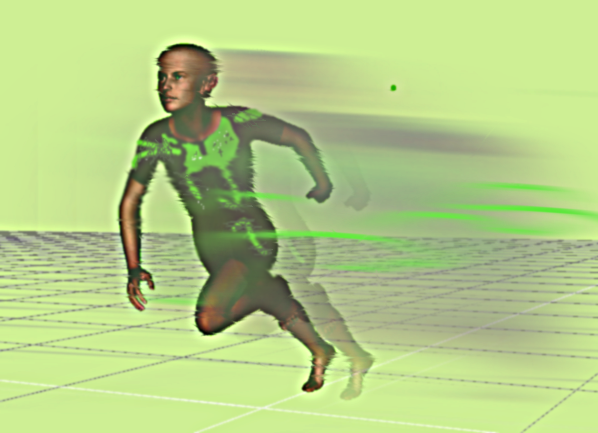BY LETTER
House/Clade Hyperborg
Sophonts > Modosophonts > Nanocyborg, Nanoborg
Sophonts > Transapients > Postbiont (Po)
Sophonts > Transapients > Second Toposophic - High Transapients
Sophonts > Transapients > Postbiont (Po)
Sophonts > Transapients > Second Toposophic - High Transapients
 Image from Steve Bowers |
House Hyperborg began in the heyday of nanotechnology and posthumanity, fourth and fifth century AT. With the emergence of the cognitive enhancements and early "superbrights" some of the resulting posthumans found their subjective experience of time increased by several orders of magnitude. Many simply adjusted themselves to the new reality and took advantage of a deeper experience and understanding of each passing moment. Others uploaded and entered virch worlds which could keep pace with their increased speed of processing. Running parallel to this were experiments with Reaction Time Enhancement. These were often failures, and in the end led to the Quickness pandemic.
One group, however, took a different, and some in retrospect say obvious, approach to both problems by combining an increase in mental speed and time sense with radical enhancement of physical reaction time and other peripheral neural signalling and processing. These ultraquick beings called themselves "Hyperborg". They were an odd combination of conservatism and radicalism. They wished to retain the ratio between physical and mental actions they had previously experienced as baseline human beings, but at the greatly enhanced speeds. They rejected the luxury and attachment of the virch worlds for the familiar yet now strange "real world". In fact, most of the Hyperborgs were and still are ardent Omegists, who believe they need to study the physical world as quickly as possible to "Bring on the Omega Point".
This clade/house has become an important force in some aspects of the physical sciences, participating in several pivotal experiments and technological advances. They are a close-knit group who still retain an archaic baseline Hu appearance which is rendered surreal by the blurring speed at which they move through the world. Hyperborgs prefer to communicate using EM transmissions, but can still use sonic speech to communicate with outsiders. They have kept pace with emerging technologies as a group, ascending to SI:1 in the 16th Century AT when technologies to allow a transapient-level brain in a human-sized body became sufficiently widespread, and again to SI:2 in the 25th century when higher-level transapients assisted with the design. In both cases many members were 'lost' to the clade as they diverted into other possible transapient forms, but a core of the clade persisted in the ancient practice of maintaining a human-like body and some key aspects of human-like behavior. Though it has not been possible for them to maintain physical speeds to match their enhanced cognition, particularly for SI:2 individuals, they are capable speeds and reaction-times that are second to none. Of course, Hyperborgs dispersed widely in the course of their studies, so it is still believed that there are many superbright and and SI:1 Hyperborgs in the Outer Volume or beyond. However, these numbers must dwindle over time, as whenever these Hyperborgs regain contact with their House, they undergo upgrade. The degree of cyborgization of House Hyperborg has been extreme, and few biont components remain except in the most ancient and 'primitive' individuals.
Hyperborgs have also made themselves strong and sturdy, both to withstand the incredible strain their speed places upon their bodies, and to facilitate their work in almost any environment if their studies require it. However, between field studies they tend to prefer cold climate worlds with thinner atmospheres, which are more comfortable for them as the work done by their high speeds generates a fair amount of heat, and they find the air friction in thicker atmospheres mildly annoying. They often will interface with mercurial virch worlds to supervise the running of some of their theoretical models, but even at ease prefer to remain in the "real world". They have, over the centuries, become particularly interested in any xeno-wormhole discoveries, as they hope some will have been moved at relativistic speeds, allowing them to survey the physical features of the universe over the fullest expanse of time possible. Rarely, individual Hyperborgs will eschew a life of study and pursue other careers, the most common being agents for virchs in their dealings with "real world" sophonts.
Many other transapients have long since incorporated some of the physical-mental hyperspeed innovations pioneered by the Hyperborg clade, particularly if they require remotes or subselves that can act very quickly.
Related Articles
- Heterochronic Socio-History - Text by Mike Parisi and John B
Study of history and historical sociology that involves interactions between minds of different subjective time-rates - Heterochronic Sociology - Text by Mike Parisi and John B
Study of social interactions between minds of different (even radically different) subjective time-rates - Heterochronics
- Quickness, The
- Reaction Time Enhancement
- Supersophonts
Appears in Topics
Development Notes
Text by Glen Finney
revised by Stephen Inniss
Initially published on 02 August 2005.
revised by Stephen Inniss
Initially published on 02 August 2005.






